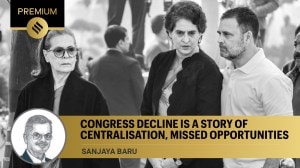Sense and Census
India is one of the few countries in the world with an unbroken chain of regular decennial census operations spanning three centuries. It ha...

India is one of the few countries in the world with an unbroken chain of regular decennial census operations spanning three centuries. It has learnt to use this data in ways that help solve problems rather than create them; to unite the nation, not to divide it. The first ever census data on religion 8212; culled from the 2001 census operations which incidentally had involved some two million enumerators 8212; has highlighted a broad spectrum of significant trends.
But, first, it is important to read the figures right. Demographer Ashis Bose was quite correct when he told this newspaper that understanding census data is a tricky and complex business even for the experts, and that politicising this process does not help, indeed it should be completely avoided no matter what the political exigencies of specific political actors may be. What makes a community like the Jains register a growth rate of 24 per cent even as a community like the Sikhs witnesses a sharp decline? Can the alarming shrinkage of the Parsi community be arrested in any way? Can the disturbing sex ratios in northern India be addressed in a meaningful way? What about the 1.5 per cent increase in the growth rate of Muslims in India? It is clearly the result of several complex factors including the dismal status of the community in general and Muslim women, more specifically. A recent baseline study indicated that 59 per cent of Muslim women have never attended school and that 60 per cent of them were married by the age of 17 8212; as compared to 55 per cent Hindu women. Muslim women had also registered a pathetic work participation level of 14 per cent in that study. All three parameters 8212; literacy, age of marriage and employment levels 8212; are known to have a crucial bearing on family size and contraceptive practices within a community.
Interestingly, the cross-border migration from Bangladesh into India over the 8217;90s emerges as a contributory factor to this growth rate. This is highlighted by the fact that there is a sharp rise in numbers in the border regions of eastern and north-eastern India, although the actual number of Bangladeshis in India still remains largely a matter of conjecture. These clearly are important developments that now need the attention of politicians, administrators, policy wonks and, most importantly, community leaders.
- 01
- 02
- 03
- 04
- 05































